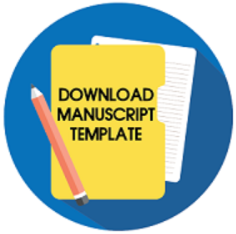Improving the story-telling skill of grade 1 students through the use of hand puppet media
Downloads
Downloads
Agofure, J. (2016). Puppet-performed show into theatre-in-education and the child development: A theoretical overview. Franklin Business & Law Journal, 3, 128–145.
Al-Mansour, N. S., & Al-Shorman, R. A. (2011). The effect of teacher's storytelling aloud on the reading comprehension of Saudi elementary stage students. Journal of King Saud University - Languages and Translation. https://doi.org/10.1016/j.jksult.2011.04.001
Arikunto, S. (2005). Manajemen penelitian. Rineka Cipta.
Caganaga, C. K., & Kalmis, A. (2015). The role of puppets in kindergarten education in Cyprus. OALib, 02(07), 1–9. https://doi.org/10.4236/oalib.1101647
Daniels, K. D. (2020). Moving hands in classroom assemblages: puppet play in a post-world. English Teaching: Practice & Critique, ahead-of-p(ahead-of-print). https://doi.org/10.1108/ETPC-11-2019-0143
Daryanto, D. (2013). Media pembelajaran: Peranannya sangat penting dalam mencapai tujuan pembelajaran. Gava Media.
Dunlap, L. L. (2009). An introduction to early childhood special education : Birth to age five. Merrill/Pearson.
Garzotto, F., Paolini, P., & Sabiescu, A. (2010). Interactive storytelling for children. Proceedings of the 9th International Conference on Interaction Design and Children - IDC '10, 356. https://doi.org/10.1145/1810543.1810613
Halidjah, S., & Magiyati, M. (2018). Peningkatan keterampilan berbicara menggunakan metode bercerita pada siswa kelas III Sekolah Dasar Negeri 29 Sungai Ambawang. Jurnal Pendidikan Dan Pembelajaran Khatulistiwa, 7(4), 1–12. https://jurnal.untan.ac.id/index.php/jpdpb/article/view/25179
Harriott, W. A., & Martin, S. S. (2004). Using culturally responsive activities to promote social competence and classroom community. TEACHING Exceptional Children, 37(1), 48–54. https://doi.org/10.1177/004005990403700106
Hong, Y. (2012). Collaborative story telling through tangible technology.
Hyland, K. (2018). Metadiscourse: Exploring interaction in writing. Bloomsbury Publishing.
Krí¶ger, T., & Nupponen, A.-M. (2019). Puppet as a pedagogical tool: A literature review. International Electronic Journal of Elementary Education, 11(4), 393–401. https://www.iejee.com/index.php/IEJEE/article/view/688
Miller, S., & Pennycuff, L. (2008). The power of story: Using storytelling to improve literacy learning. Journal of Cross-Disciplinary Perspectives in Education, 1(1), 36–43.
Mokhtar, N. H., Halim, M. F. A., & Kamarulzaman, S. Z. S. (2011). The effectiveness of storytelling in enhancing communicative skills. Procedia - Social and Behavioral Sciences, 18, 163–169. https://doi.org/10.1016/j.sbspro.2011.05.024
Musfiroh, T. (2008). Memilih, menyusun, dan menyajikan cerita untuk anak usia dini. Tiara Wacana.
Nurbianti, D. (2005). Metode pengembangan bahasa. Universitas Terbuka Press.
Nurgiyantoro, B. (1988). Penilaian dalam pengajaran bahasa dan sastra. BPFE.
Petersen, K. S. (2014). Interviews as intraviews: A hand puppet approach to studying processes of inclusion and exclusion among children in kindergarten. Reconceptualizing Educational Research Methodology, 5(1). https://doi.org/10.7577/rerm.995
Purwanto, N. (2011). Evaluasi hasil belajar. Pustaka Pelajar.
Remer, R., & Tzuriel, D. (2015). "I teach better with the puppet"-Use of puppet as a mediating tool in kindergarten education–an evaluation. American Journal of Educational Research, 3(3), 356–365. https://doi.org/10.12691/education-3-3-15
Romanski, N. M. (2016). Narrative discourse in teaching practice: Uncovering multiple layers of story in the art classroom and implications for narrative leadership. In Dissertation Abstracts International Section A: Humanities and Social Sciences.
Romanski, N. M. (2019). Reigniting the transformative power of puppets through narrative pedagogy, contemporary art, and transdisciplinary approaches in art education. Art Education, 72(4), 36–42. https://doi.org/10.1080/00043125.2019.1602496
Sadiku, L. M. (2015). The importance of four skills reading, speaking, writing, listening in a lesson hour. European Journal of Language and Literature, 1(1), 29. https://doi.org/10.26417/ejls.v1i1.p29-31
Sanjaya, W. (2016). Strategi pembelajaran berorientasi standar proses pendidikan. Prenada Media. https://doi.org/2008
Santosa, P. (2008). Materi dan pembelajaran Bahasa Indonesia SD. Universitas Terbuka Press.
Sudijono, A. (2005). Pengantar statistik pendidikan. PT Raja Grafindo Persada.
Sumiati, A. (2009). Metode pembelajaran. Bandung: Wacana Prima.
Tompkins, G. E. (2002). Language arts: Content and teaching strategies. Merrill/Prentice Hall.
Warso, A. W. D. D. (2017). Publikasi ilmiah tinjauan ilmiah dan best practice. Penerbit Graha Cendekia.
The copyright of the received article shall be assigned to the journal as the publisher of the journal. The intended copyright includes the right to publish the article in various forms (including reprints). The journal maintains the publishing rights to the published articles.

Jurnal Prima Edukasia by http://journal.uny.ac.id/index.php/jpe/index is licensed under a Creative Commons Attribution-ShareAlike 4.0 International License.


























